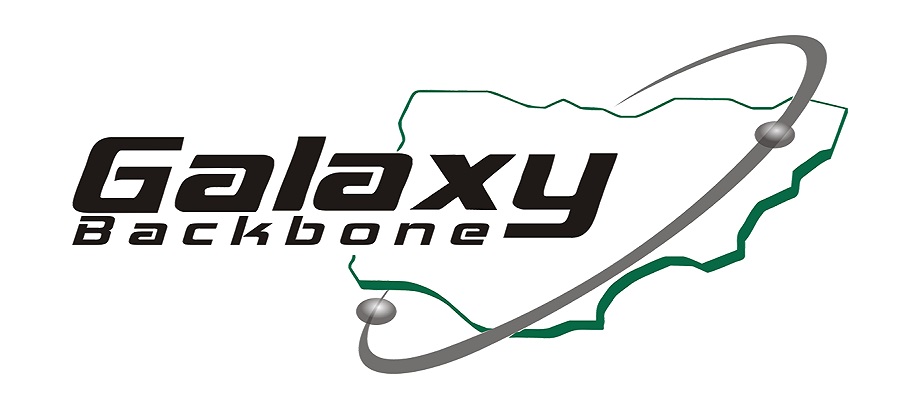E-Business
FG to Harmonize BVN, Others into National Identity Database
By Fabian Tarpael, Abuja
The Federal Government has announced its decision to stop what it called proliferation and duplication of biometric-based identity systems in the country.
Mrs. Habiba Lawal, acting Secretary to the Government of the Federation, stated this in Abuja while inaugurating a former governor of Osun State, Olagunsoye Oyinlola, alongside eight others as chairman and members, respectively of the Governing Board of the National Identity Management Commission, (NIMC).
Lawal noted that the Federal Government established the NIMC as the primary institution charged with the responsibility of providing and regulating identity management in Nigeria, the issuance of the National Identification Number (NIN) and ID card to all registrable persons as well as the harmonisation and integration of existing identification databases in government agencies and integrating them into the National Identity Database (NIDB).
Represented on the board are the military, Nigeria Immigration Service, Federal Road Safety Corps, Economic and Financial Crimes Commission, other government agencies and the private sector.
Among the first task the ex-governor and his team have been saddled with is the harmonisation of databases of Nigerians believed to have been unnecessarily duplicated.
Data expected to be harmonized included the Subscriber Identification Module (SIM) card registration being handled by the Nigerian Communication Commission (NCC); Bank Verification Number (BVN); Drivers Licence from the Federal Road Safety Commission (FRSC); and voters card number among others.
Lawal said the administration of President Muhammadu Buhari expects the proliferation and duplication of biometric-based identity systems to stop as it was neither cost effective, nor security smart.
“Apart from being unwieldy, the cost of operating multiple discordant databases and infrastructure is unattainable,” Lawal had stated.
She urged the National Identity Management Commission (NIMC) to come up with a more effective and innovative identity management system that was devoid of duplication for the country.
Mrs Lawal also said despite the successes of the commission at data capture of registrable persons in the country, “there was still much more to be done.”
She urged members of the Board who were drawn from both the public and private sectors, to take a cue from the countries that have successfully issued unique identity to its citizens and have utilised such identity to transform their society and economy.
“We need change, positive change in our identity eco-system. The change starts with all of us agreeing to make the sacrifices and commitment required, defining clear policy direction and taking collective actions to achieve our common goal.
“The NIMC must focus its energy on ensuring that the remaining component of the National Identity Management System (NIMS) roll-out alignment and switching over by the Ministries, Departments and Agencies (MDAs) through the harmonization and integration framework is successfully implemented.
“The speed of data collection must have to be improved upon, and this will reduce justifications given by MDAs, as reasons for duplicated biometric options.
“Hopefully, the harmonisation programme, being spearheaded by the Office of the Vice President, will help to achieve this, especially, by the commission ensuring that the MDAs switch or at least, align their existing infrastructure as data collection agents to the NIMC system,” she said.
In an acceptance speech, Oyinlola gave the assurance that the Board members will work assiduously to justify the confidence reposed in them by the government.
“We, therefore, pledge our loyalty to our dear nation and Mr President who has recognised our inherent capabilities and made the appointment, based on trust, competence and the confidence reposed in us.
“We shall live up to expectations, especially given the fact that the burden placed on our shoulders is a very sensitive and significant one that must be carried with every sincerity and patriotism,” he said.
E-Business
Galaxy Backbone Celebrates the Federal Government’s Paperless Civil Service Milestone

Galaxy Backbone (GBB) aligns with and celebrates the successful announcement by the Office of the Head of the Civil Service of the Federation on the achievement of a Paperless Civil Service, a significant milestone in Nigeria’s public sector reform and digital transformation agenda.

The milestone was formally highlighted at a press briefing led by the Head of the Civil Service of the Federation, Mrs. Didi Esther Walson-Jack, who commended Galaxy Backbone for its sustained support and contribution throughout the implementation of the programme.
GBB has played a critical role in enabling this transition by providing secure, scalable, and shared digital infrastructure that supports the digitisation of government processes across Ministries, Departments and Agencies (MDAs). Through the 1Government Cloud, MDAs have been empowered to migrate from paper-based workflows to digital platforms, improving efficiency, collaboration, data security, and service delivery across the Federal Civil Service.
In addition, GovMail, GBB’s secure government email platform, has strengthened official communication, enhanced records management, and reinforced cybersecurity standards—key pillars in sustaining a paperless operating environment.
Galaxy Backbone acknowledges the collective efforts of the Office of the Head of the Civil Service of the Federation, Permanent Secretaries, Directors of ICT, consultants, partners, and dedicated public servants whose commitment and collaboration ensured the smooth delivery of this initiative.
The Managing Director/Chief Executive Officer of Galaxy Backbone, Prof. Ibrahim Adeyanju, was represented at the press briefing by Akintayo Bamisaye, Acting Group Head, Research, Digital Innovation and Skills Department (RDIS).
GBB describes the achievement as a strong close to 2025 and reaffirms its commitment to supporting the Federal Government in building a modern, efficient, and digitally enabled public service.
E-Business
Jumia CEO says Black Friday Signals Nigeria’s E-Commerce Maturity

At the close of 2025, Temidayo Ojo, the CEO of Jumia Nigeria, reflected on a year-end shopping season that points to the growing maturity of the country’s e-commerce market. “Black Friday is no longer a single, short-lived spike in activity,” he said.

“It has become a familiar, anticipated moment in the retail calendar, where consumers shop deliberately and with confidence.”
Preliminary KPIs for the two months ended November 30, 2025, show strong year-on-year growth in both orders and Gross Merchandise Value (GMV), with GMV growth outpacing order growth. This indicates that customers are placing fuller, more considered baskets rather than shopping in fragmented transactions. Nigeria ranked among Jumia Group’s better-performing markets, with engagement remaining steady throughout the Black Friday period rather than spiking briefly and tapering off.
A key factor behind this performance is the growing familiarity of consumers with online shopping. Customers are increasingly leveraging platform features such as saved carts, brand stores, and price comparison tools to plan purchases in advance. This trend suggests that digital commerce is becoming embedded in everyday habits rather than being viewed as a one-off event.
Ojo also highlighted the role of Jumia’s JForce network in connecting digital commerce to local communities. “Our agents are critical to ensuring that customers across Nigeria, including secondary cities and smaller communities, have access to variety, consistent pricing, and reliable delivery,” he said. “During peak periods like Black Friday, JForce agents can respond faster, serve more customers efficiently, and build stronger local relationships. This isn’t just a distribution channel—it’s a pathway to sustainable income and inclusion.”
Reflecting on the overall performance, the CEO concluded: “What we’re seeing this year-end is steady engagement across categories, stronger consumer confidence, and partners like our JForce agents benefiting from increased activity.
“It confirms that Nigeria’s e-commerce ecosystem is maturing, growing in a more structured and resilient way. As the December Holiday Sale continues, we expect these patterns of familiarity, trust, and participation to sustain momentum and drive both commerce and community impact across the country.”
E-Business
Galaxy Backbone Tops FG’s Website Performance Ranking

Galaxy Backbone Limited (GBB) has been ranked first overall in the 2025 Federal Government Website Performance Scorecard.

This is a landmark achievement for Nigeria’s digital economy.
The ranking, conducted by the Bureau of Public Service Reforms (BPSR), is the definitive benchmark for digital excellence and transparency across all Ministries, Departments, and Agencies (MDAs).
Professor Ibrahim Adepoju Adeyanju, managing director and CEO of Galaxy Backbone, received the award during a ceremony in Abuja.
He described the feat as a validation of the agency’s“Nigeria First”data sovereignty strategy and its relentless pursuit of service excellence.
This recognition comes as the Federal Government intensifies its push to achieve a fully paperless civil service by December 31, 2025.
GBB has been the primary architect of this transition through its 1Gov Enterprise Content Management (ECM) platform, which now hosts the operations of almost all federal MDAs.
The award adds to a growing list of accolades for Galaxy Backbone in 2025, following its recent win of the “International Standard Excellence Award for Best IT Service Provider.”
As the central hub for government shared services, GBB’s performance serves as a blueprint for other agencies currently undergoing digital transformation.
With its expanded fiber-optic backbone now covering over 13 states and its secure cloud solutions, Galaxy Backbone remains the cornerstone of Nigeria’s vision to become a leading digital nation by the end of the decade.

 Telecom2 days ago
Telecom2 days agoT2 Faces NCC Probe in Benue Over Major Service Outage in 9 LGAs

 Telecom2 days ago
Telecom2 days agoMTN Nigeria Crowns Ayo Benzi Winner of Next Afrobeats Star

 E-Business2 days ago
E-Business2 days agoJumia CEO says Black Friday Signals Nigeria’s E-Commerce Maturity

 E-Financial2 days ago
E-Financial2 days agoGTCO Secures Regulatory Approvals to Raise N10bn in Private Placement

 General News2 days ago
General News2 days agoNDIC Reinforces Full Oversight Compliance to Safeguard Depositors

 Telecom2 days ago
Telecom2 days agoNCC Grants 45 Days for Telecoms Firms to Fix Unapproved Shareholding Changes

 Telecom2 days ago
Telecom2 days agoNCC Unveils Draft 5-Year Spectrum Roadmap, 60 GHz License-Exempt Guidelines to Boost Broadband, Innovation

 E-Financial1 day ago
E-Financial1 day agoBanks to Impose N50 Stamp Duty on Transfers of N10,000 and Above from January 1













